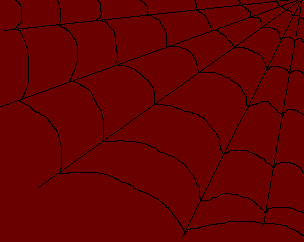General Information About R546
Introductory Video and Documentary by Umida Khikmatillaeva:
Interactive R546 Documentary from Umida Khikmatillaeva, March 2012
R546 Documentary in YouTube from Umida Khikmatillaeva, March 2012
History & Intended Audience:
Educators in all sectors are struggling with wave after wave of educational change. Many recognize the need for shifting their teaching philosophy to a more learner-centered or hands-on approach. However, they too often lack sufficient time and resources. In response, this course provides a roadmap or useful guide for those stuck in the murky swamp of paradigm change and educational reform. Different versions of this course have been taught since 1991, with videoconferencing added in 1996. Past course participants have also included graduate students, corporate trainers, instructional designers, administrators, and private consultants. This course is intended for:
- Anyone wanting to feel better prepared to teach.
- Graduate students looking to round out a doctoral or master's degree or minor in IST.
- Corporate trainers wanting to embed practical strategies into their training workshops and classes.
- Higher education professors wanting to enhance their instruction with innovative teaching.
- Instructional designers interested in embedding thinking skills into software and other media.
- K-12 principals and other administrators hoping to integrate various educational reform efforts.
- Practicing teachers searching for professional development opportunities for engaging learners.
- Private consultants offering thinking skill or problem solving workshops or training.
There are thousands of teachers, graduate students, parents, and corporate trainers in Indiana and elsewhere wanting to upgrade their pedagogical skills and knowledge related to student thinking and learning. At the same time, there are millions of bored and depressed learners who savor the brief moments when their instructors try something new. You can be such an innovative instructor!
Purpose & Approach:
Since the early 1980's, countless reports have detailed the shift toward an information-based economy and the need for a more technologically sophisticated workforce. A modern-day workforce clearly demands skills such as creativity, flexibility in thought, the ability to make decisions based upon incomplete information, complex pattern recognition abilities, and synthesis skills. With each advance in technology, there are renewed projections of increasingly higher skill levels needed to effectively function in society. Though most of these changes are occurring faster most of us can adapt, some institutions are starting to develop learning environments that stimulate and nurture critical and creative thinking as well as cooperative learning and student motivation to succeed. At the same time that educators have become aware of the importance of imagination, decision-making, and other higher-order thinking skills, business and industry leaders have cried out for flexible and creative employees who can look beyond the numbers.
In response to the emerging global marketplace, there has been a renewed interest in teaching and learning within public school and higher education settings as well as in military and corporate training environments. There has also been a parallel explosion in information about instructional practices and ways of delivering that information. No longer will people tolerate a curriculum that emphasizes the rote memorization of facts over problem solving and creativity. Instead, innovative instructors and trainers engage learners with more authentic and active learning experiences. Even with such renewed interest and resources, most teachers still lack the time and resources to adequately deal with the proliferation of instructional practices and associated ideas regarding educational change. The basic purpose of this course, therefore, is to attempt to fuse motivation and cooperative learning to thinking skill areas such as critical and creative thinking. The reason for this synthesis is to enable teachers, administrators, consultants, instructional designers, corporate trainers, and graduate students to sort through masses of information available on these topics and see some benefit within their personal and professional lives.
The books and activities selected will enable us to understand coinciding trends in education related to creative thinking, critical thinking, motivation, and cooperative learning. In starting on this path, specific techniques and ideas will be offered as well as implementation steps. Demonstrations and hands-on experiences of various methods will be used to highlight method similarities and differences. In addition, students will be exposed to ways to use technology to increase student thinking skills and teamwork. Finally, advice will be offered for getting started using these alternative instructional strategies.

